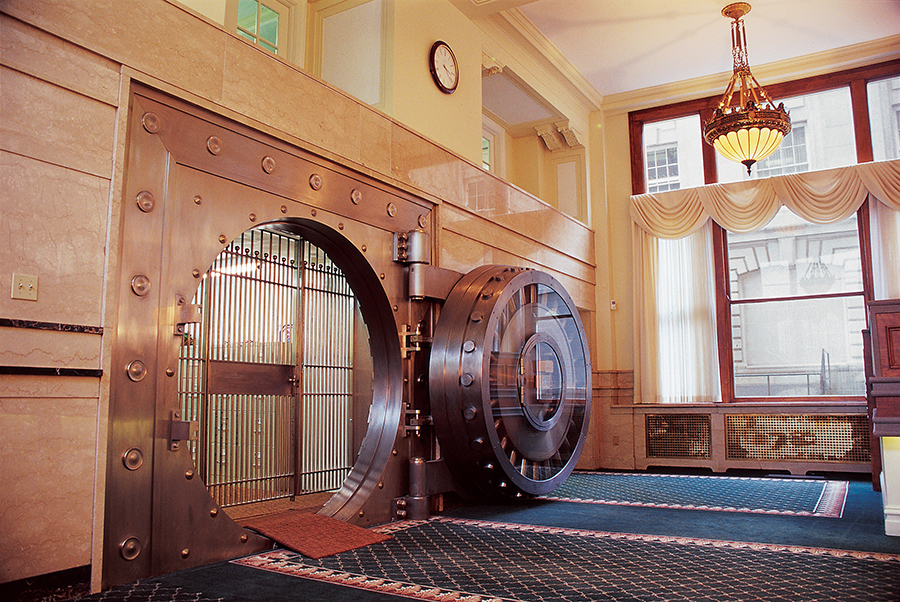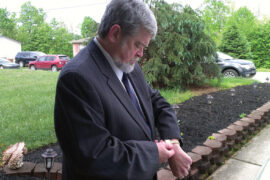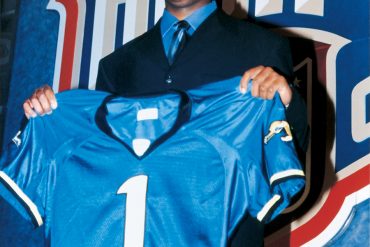John Hankins is transforming Huntington one building at a time.
By Benita Heath
HQ 40 | AUTUMN 2000
Maybe it was a coincidence. Maybe not. But just inside the newly refurbished Guaranty Bank building is a first-rate example of the spirit of early American landscape painting when the eye saw beyond reality into vistas of the painters own creating.
M.R. Harrison’s Yosemite Valley is stunning, dramatic and grand in its vision and palette. The English-born 19th century painter, who for most of his life called Wisconsin his adopted home, captures the spirit of early America, when everything was new. Harrison took the technique he learned in the Royal Academy in London and expanded upon it to show this country at its dramatic best.
Does any of this sound just a little bit familiar? Let’s fast-forward one century and four more decades to get an answer.
Does the spirit of this painting sound a lot like a man who would take it upon himself to transform his hometown’s courthouse dome to a glorious gold?
Does it sound like a man who would buy one-time symbols of Huntington ‘s commerce and restore them to their past glory?
Does it sound like a man who just happened to have tucked away somewhere two 12-foot 19th century streetlamps that once graced the front of the Louvre?
You’re way ahead of me, aren’t you?
You know this is a story about John Hankins. Or rather about one of the buildings that Jack built. Sorry, restored. And Huntington is getting a new look because of his zeal.
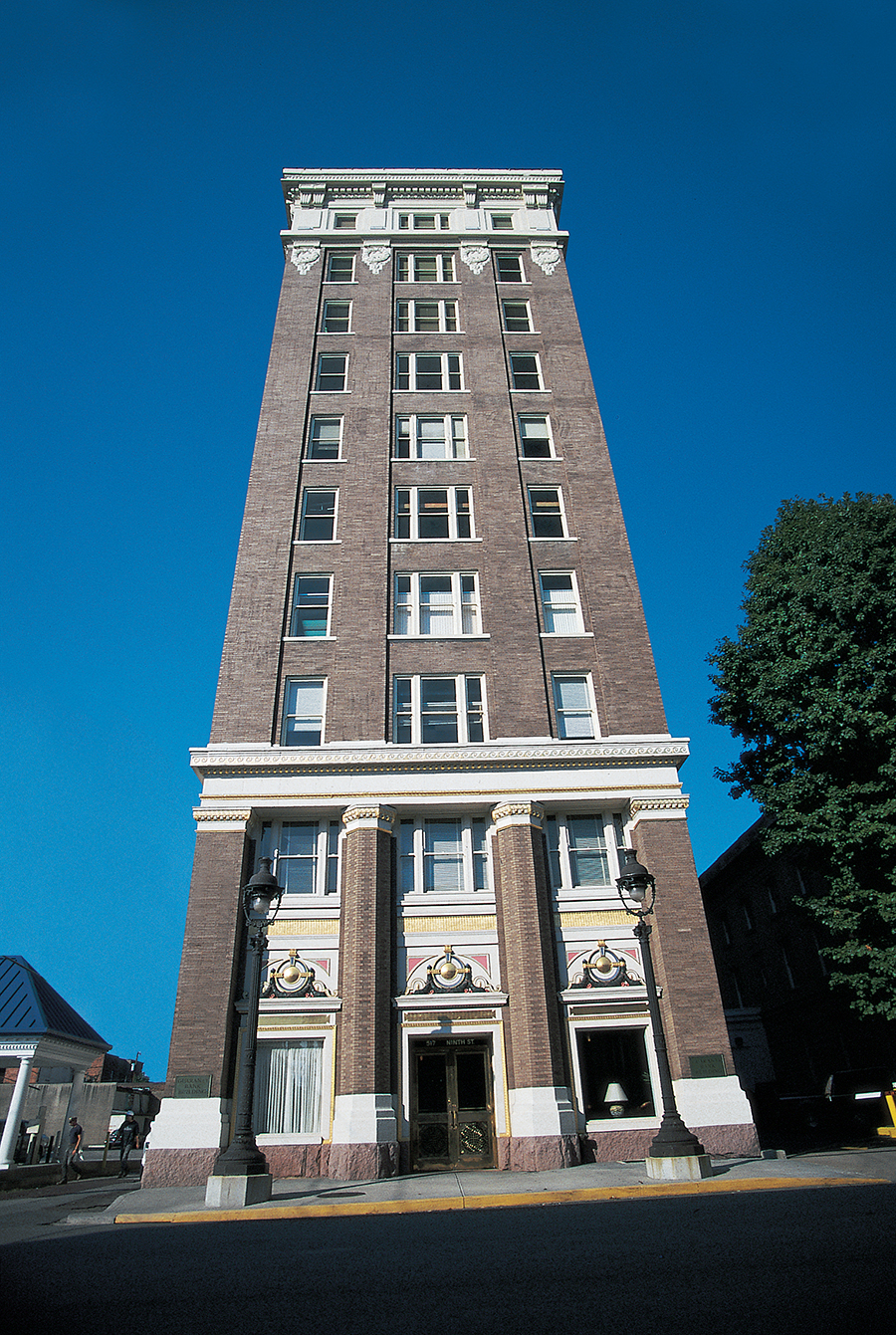
Next to the old post office on 9th Street is one of a myriad of restoration projects the Huntington lawyer has undertaken in our area in the past few years.
This tall narrow building has gone by many names — Huntington Banking, Chafin, Arch Coal – but its look has always been about the same. It seemed always to exude the gray drabness of austere commerce. But those days are over as the Hankins’ touch has gilded it inside and out.
First look at the 11-story building’s facade as it stretches toward the sky like a foothill of the mighty Appalachians. Everywhere the structure, firmly rooted on a base of Tennessee quarried pink granite, is dappled with 24-carat gold.
Take a few steps inside and pass through the massive bronze doors Hankins found at an auction at Red Baron’s, one of the premier antique dealers in Atlanta.
“These are absolutely one of the finest sets of bronze doors I’ve ever seen with this open filigree work,” Hankins said.
Now look around. This is definitely not your father’s bank building. Hallways resonant with the sumptuousness of tigerstriped taupe marble with terrazzo floors that swirl concrete and marble like Oreo cookies in ice cream.
Shining down on the bank’s lobby and offices is an array of mammoth 100-pound brass chandeliers with pendant-shaped bowls made of mother of pearl. Here again the Hankins’ restoration plays out the motif of stately elegance in this choice of lighting fixtures.
The ceiling holds an interesting story that shows how this restoration project has constantly married craftsmanship with ingenuity.
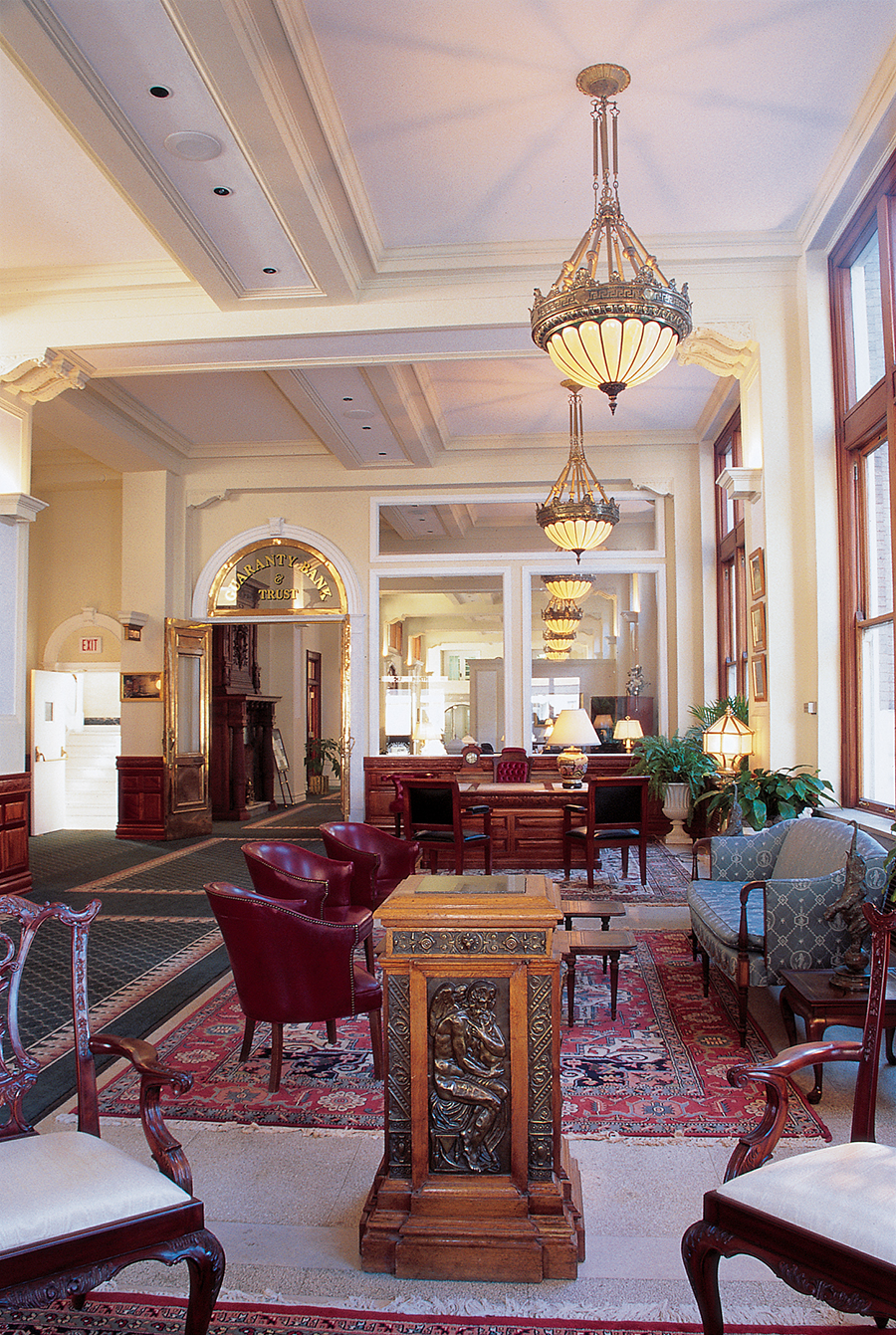
“When we started the job you understand the C&O (a one-time owner) in 1957 had put in drop ceilings. They had totally mutilated that great plaster work in order to hang the drop ceilings,” Hankins explained. “They had to literately tear out all the plaster work to have a place to hang their wires.”
About 70 percent of the original Neoclassical Revival design work was destroyed, he said. This reality forced Hankins to face what looked like a seemingly insurmountable restoration challenge.
Could the 15-foot ceilings be restored? After all, plasterwork — like the once de rigueur bronze doors at a bank — is a thing of the past.
“We were faced with a situation of going back with the drop ceilings and having an ordinary dime store facility,” Hankins said.
Ironically, the computer age gave more than a helping hand to the man who revels in the craftsmanship of centuries past. The restorer got on the Internet and found that there were six people in the United States skilled at onsite plaster repairs. One of those was Dale Spicer of Charleston.
“Dale is in his 70s and realized there aren’t people around to carry on his handiwork,” Hankins said. “He was kind of thrilled to find our craftsmen who would say, ‘You show us how.’”
Nine months later, using the bank vault in the back for a plaster shop, Hankins’ crew recreated intricate and magnificent coffered ceiling featuring the recessed panel effect created in the 19th century as homage to the temples of ancient Greece.
Throughout the building are examples of Hankins’ connoisseur’s eye that delight in the Classical period of architecture and furnishing, whether it’s an Empire mirror with Corinthian capitals or a 300-year-old French mantel in the bank lobby.
The mantel, another find from Red Baron’s, came from a large chateau in France.
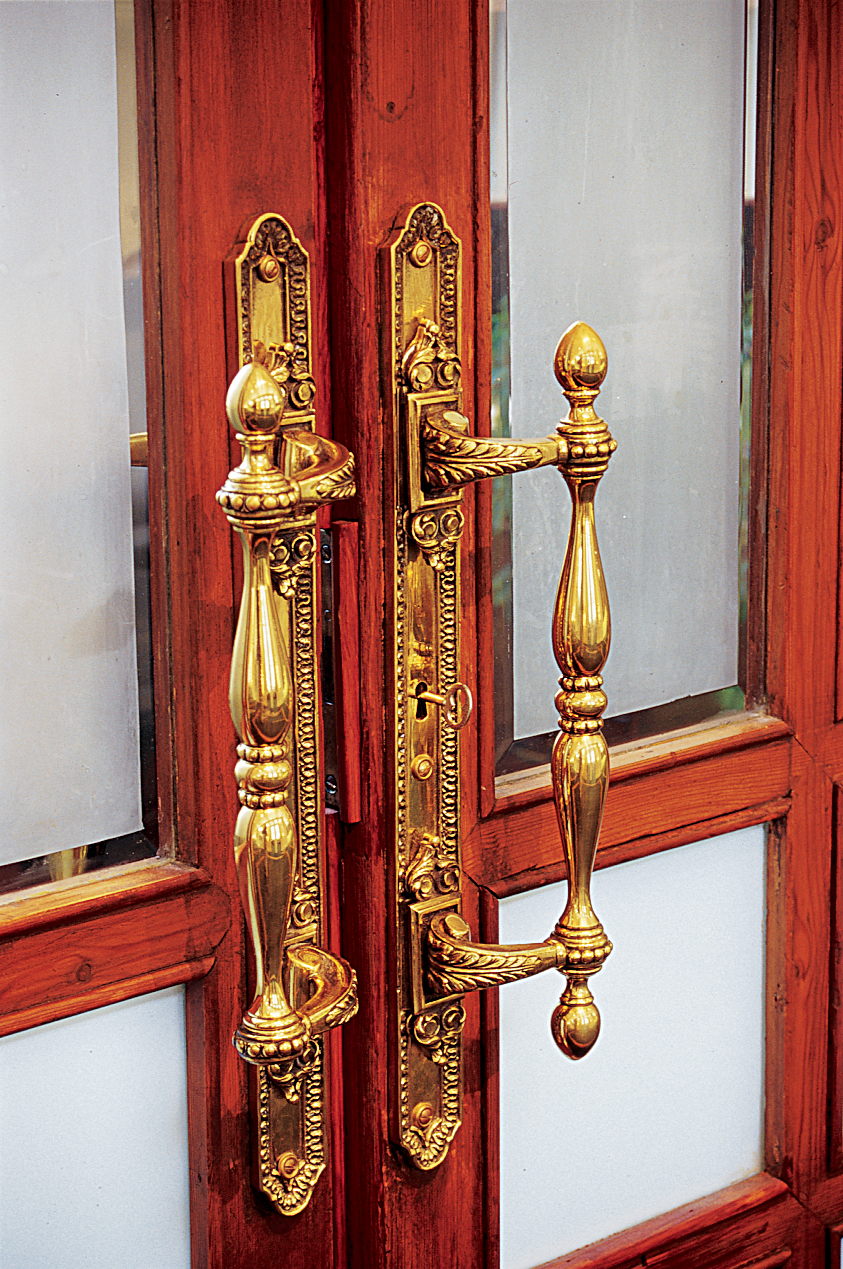
Hankins calls Baron’s “probably the number one dealer. I’m a regular attendee at his auctions. And this particular mantel was one of the best I’ve seen.”
Hankins’ love of the Classical parallels the fascination he has with this building and why he bought it in 1997 for $100,000.
“I always recognized it as being a very unusual building,” he said. “The detail on the front and the entryway is all cast iron. When you look at the shape of the long shot gun building, when you see its crown moldings, you realize it’s a building in the Neoclassical Revival era. The classical form and shape has turned out to be pleasing to the eye. It has withstood the test of time.”
Three major tenants anchor the current structure — Guaranty Bank and Trust, Arch Coal and the law offices of Campbell, Wood , Bagley, Emerson, McNeer and Herndon.
“John renovated this building for Class-A office space and that is exactly what we were looking for. He did a great job utilizing the pace in such a narrow building,” notes attorney Grant McGuire. “Having a work environment like this changes the entire psychological atmosphere and makes you want to be more productive.”
The structure was built around 1911 as the home of Huntington Banking and Trust Co., originally 40-feet by 160-feet or about twothirds of it present size. In 1926 the bank, lacking the prophetic touch to see the Great Depression lurking, built a 40-foot addition to house its vault.
“That was the in thing to do,” Hankins said. “People needed to know their money was safe.””
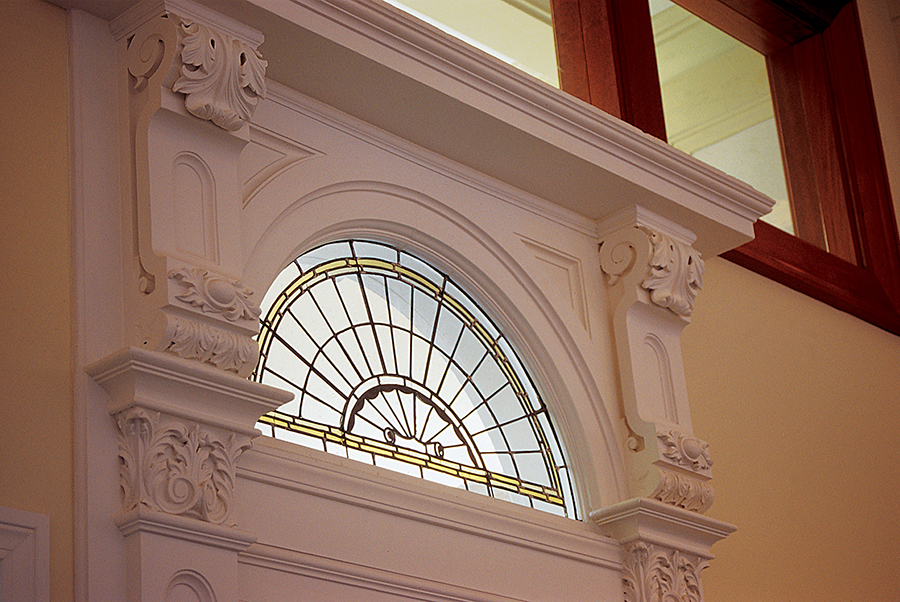
Like everything else in the building the addition was built with extreme care and skill.
“The craftsmen were so good you can’t go over there and find where the two buildings attach,” Hankins said.
The vault proved wishful thinking because six years later the bank filed for bankruptcy and closed. Soon Western Southern Life Insurance Co., headquartered in Cincinnati, bought it.
Since then the building has gone through its own identity crisis as tenants came and went from Island Creek Coal to the C&O Railroad. It even went through another structural change when one-time owner Don Chafin, the Logan County sheriff who bought it in 1947, built a penthouse for himself. That penthouse now has become a luxurious conference area under Hankins’ guiding eye using oak paneling from the First Baptist Church on Fifth Avenue as a major decorative motif.
“There was a remodeling job being performed over at the church. They had removed a lot of the oak,” Hankins recalled. “Our craftsmen took their 90-year-old oak and reconfigured it. It wasn’t in that form when we got it. But it had its age and patina. And we structured it into the raised paneling that is in the penthouse.”
The penthouse with a conference room and bar is among the perks for the present tenants along with a health club with saunas and exercise rooms in the refurbished basement.
Guaranty Bank president Mark Sprouse admits, “The selection of the location for the bank had some historical significance.”
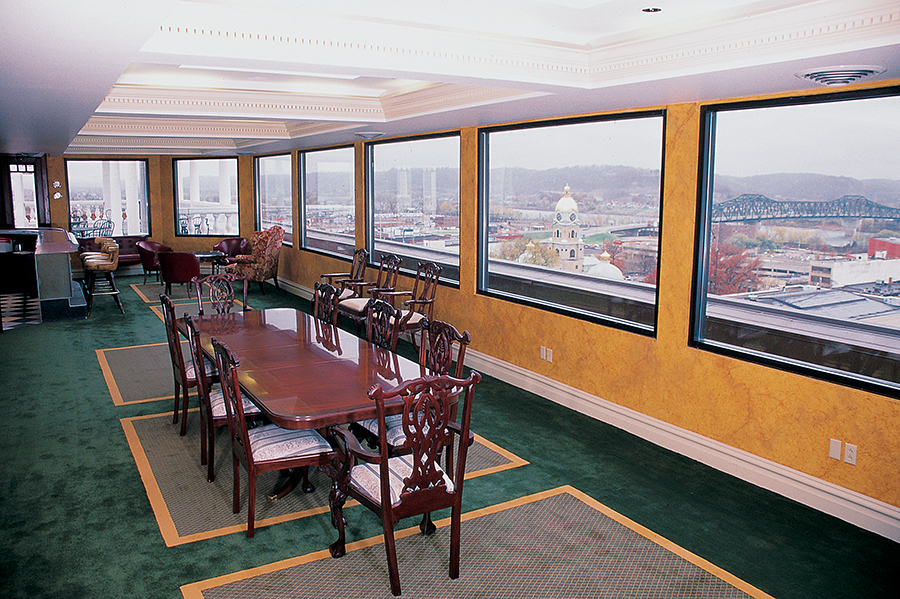
“John had great vision for what he wanted to do and customers are always complimenting on the beauty of the building.”
Now remember those lights from the Louvre. Wonder how they got to Huntington? The 1890s copper-clad lights were removed from the grounds of the Paris museum for the Pyramide du Louvre, the glass entrance created by the Canton-born architect l.M. Pei, who also designed the Kennedy Library in Cambridge, Mass.
Two final questions: ls Hankins pleased with his handiwork?
“We are very happy with the results though I don’t necessarily recommend it from a financial standpoint.”
And the price tag for all of this?
“Very, very expensive. And that’s all I’m going to say.”

